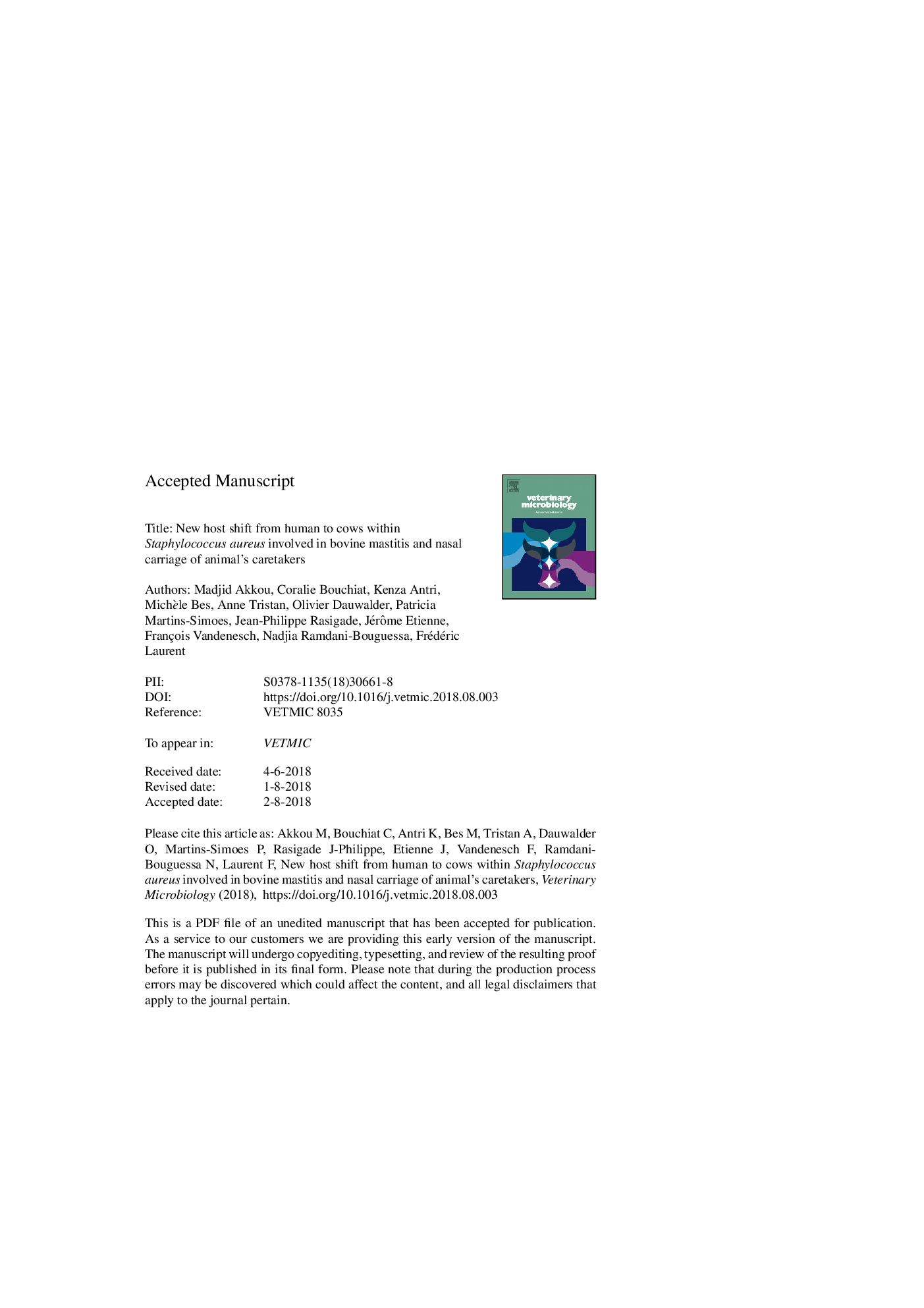| Article ID | Journal | Published Year | Pages | File Type |
|---|---|---|---|---|
| 8505107 | Veterinary Microbiology | 2018 | 25 Pages |
Abstract
Staphylococcus aureus is a commensal and pathogen of both humans and bovines. While the epidemiology of both groups has been extensively studied individually, little is known about the potential zoonotic transfer from animal strains to human being and vice versa. To determine the S. aureus prevalence of bovine mastitis in Algeria and the zoonotic transfer of strains to human beings, mastitis milk samples were collected, and professionals in a close contact with bovines were nasal swabbed. S. aureus isolates were all characterized by methicillin resistance and spa-typing. DNA microarrays analysis was performed on a subset of strains in order to detect other virulence factors, including toxins, and to assign the isolates to theirs MLST clonal complexes. Overall, 116/222 (52.3%) cows suffered from mastitis, whose 38.8% (45/116) infected with S. aureus. Human nasal carriage was of 38% (49/129), with only 4 MRSA carriers (3.1%). A higher diversity of spa-types was observed in human (35/50) than in bovine (18/67) isolates, with a predominance of clonal complexes CC97 and CC22 in bovines. The typical animal clone CC97 was occasionally detected in human beings. Conversely, the CC22 S. aureus clone largely switched from humans to bovines. Our study highlights the potential dynamics of animal and human S. aureus strains in the farm environment in Algeria, which may represent a health threat in both populations.
Related Topics
Life Sciences
Agricultural and Biological Sciences
Animal Science and Zoology
Authors
Madjid Akkou, Coralie Bouchiat, Kenza Antri, Michèle Bes, Anne Tristan, Olivier Dauwalder, Patricia Martins-Simoes, Jean-Philippe Rasigade, Jérôme Etienne, François Vandenesch, Nadjia Ramdani-Bouguessa, Frédéric Laurent,
